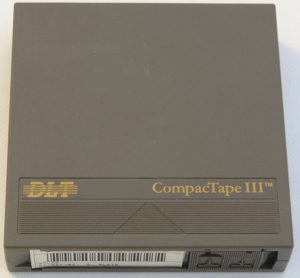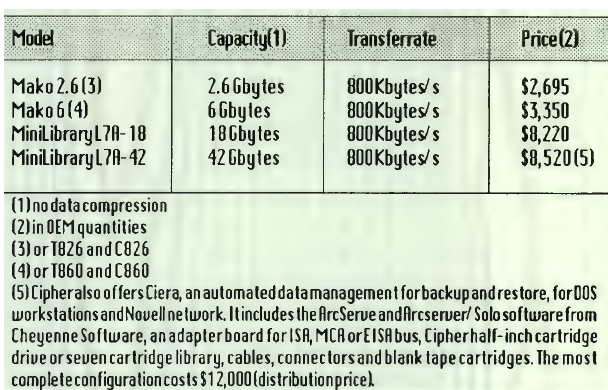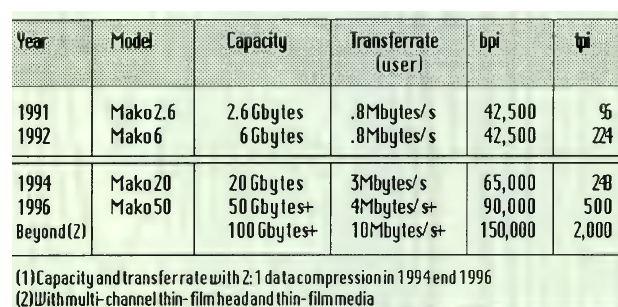History (1992): What’s DLT or Digital Linear Tape?
DEC tape format in which Archive is seriousy investing
By Jean Jacques Maleval | August 4, 2020 at 2:07 pmDigital Linear Tape (DLT) was initially introduced by Digital Equipment Corp. (DEC) in 1985 to meet the backup needs of its proprietary mid-range systems.
DEC has shipped 350,000 units and there are 16 million cartridges in use.
The technology has been ported recently to other systems by the Cipher division of Archive, mainly to compete with the 8mm tape cartridge from Exabyte.
The first DLT offering was a 2.6GB drive with a transfer rate of 800KBs/s. This 2.6GB format was adopted by both ANSI and ECMA in the first part of 1992.
But this was not as high in capacity as the largest 8mm drive equivalent unit which offers 5GB. DEC and Cipher followed with a 6GB capacity drive which is the current offering, still with a 800KB/s transfer rate, SCSl-2 interface and blocking factor. This 6GB product hit the market in early June 1992.
“We are now in allocation with this product. We believe that, for Cipher, this business will be somewhere around $20 million for the first year,” said Fred Richardson.
The drives are in a full-height 5.25-inch form factor and will probably never be a half-height product on account of the size of the tape. The 1,100 feet long cartridge uses half-inch metal particle tape, the same one used in consumer and professional audio and video applications and has a substantial market share in the computer industry through 8mm and 4mm DAT drives. The density is 42,500bpi and the track density 224tpi, for an access time of 90s average.
One 6GB cartridge costs $45 for end users, compared to close to $30 for an 8mm cartridge.
DEC christened its product CompactTape III (previously known as TF857) which uses longigitudinal recording with serpentine format (writing along the tape instead of across it), already used by Cipher in its 3480 type cartridges but with a different recording method than the one used by IBM.

Read after write has also been implemented, which means placing a read head immediately behind the write head. Data is read and compared with what is in buffer and if a block is found to be in error it is rewritten.
To reach the transfer rate goal, there are 2 heads writing in parallel. The block size is 4KB grouped in 20 blocks (16 data blocks and 4 ECC blocks). An IDRC compression system is added which can, according to Cipher, double the capacity of the tape. Bit error rate is 1×1017 and MTBF 80,000 hours. The tape is guaranteed for 10 years and 200,000 passes, the ferrite head for 6,000 hours.
Actually, Cipher also offers an automatic loader with 7 cartridges, which results to a total native capacity of 42GB.
The new drive is manufactured by DEC but Archive is on the process of negotiations to manufacture it in its own facility in Singapore.
Actual DLT family

Future drives (1) in comparison with actual ones

This article is an abstract of news published on the former paper version of Computer Data Storage Newsletter on issue ≠57, published on October 1992.
Note: This technology was acquired by Quantum in 2002 registering a huge success before being killed by LTO.














 Subscribe to our free daily newsletter
Subscribe to our free daily newsletter


